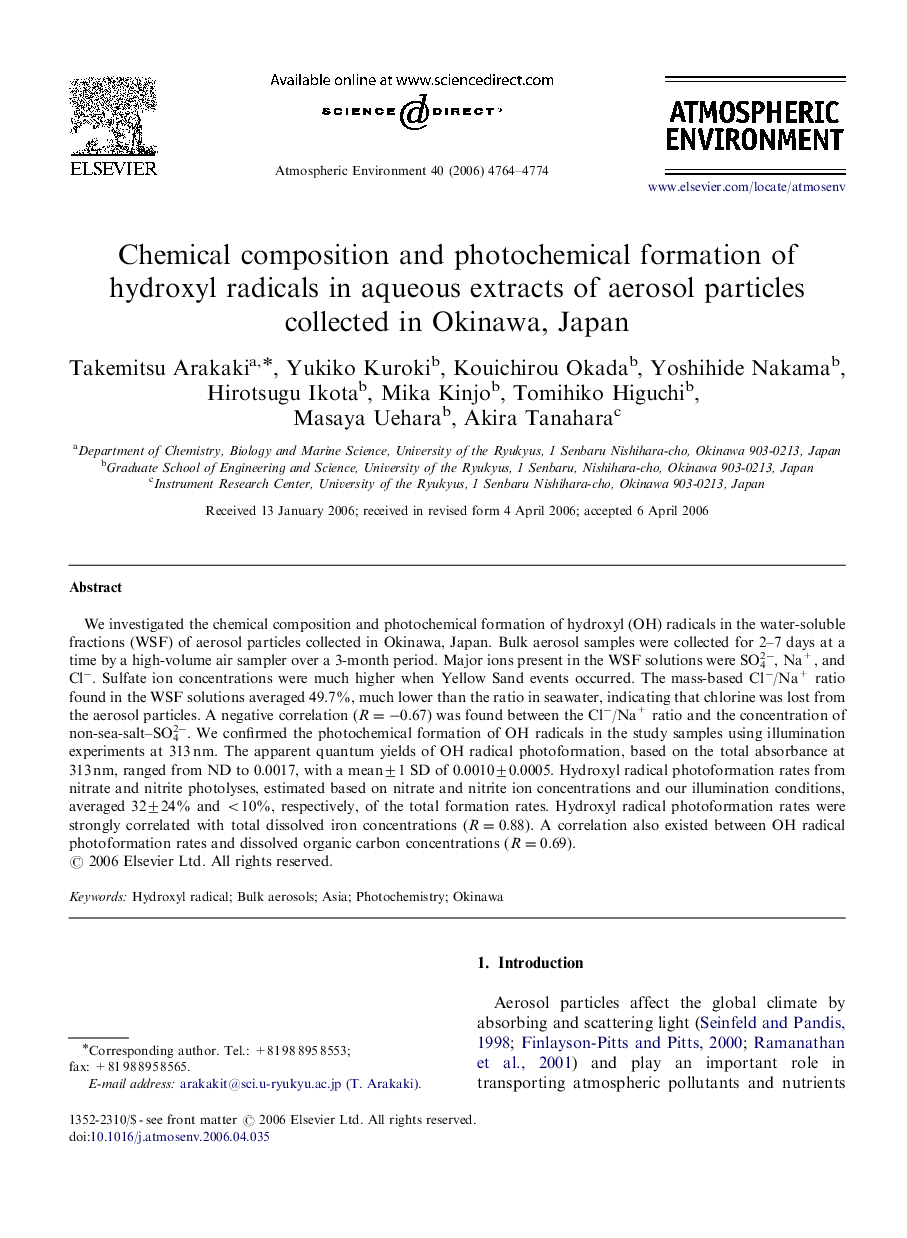| Article ID | Journal | Published Year | Pages | File Type |
|---|---|---|---|---|
| 4443915 | Atmospheric Environment | 2006 | 11 Pages |
We investigated the chemical composition and photochemical formation of hydroxyl (OH) radicals in the water-soluble fractions (WSF) of aerosol particles collected in Okinawa, Japan. Bulk aerosol samples were collected for 2–7 days at a time by a high-volume air sampler over a 3-month period. Major ions present in the WSF solutions were SO42−, Na+, and Cl−. Sulfate ion concentrations were much higher when Yellow Sand events occurred. The mass-based Cl−/Na+ ratio found in the WSF solutions averaged 49.7%, much lower than the ratio in seawater, indicating that chlorine was lost from the aerosol particles. A negative correlation (R=−0.67) was found between the Cl−/Na+ ratio and the concentration of non-sea-salt–SO42−. We confirmed the photochemical formation of OH radicals in the study samples using illumination experiments at 313 nm. The apparent quantum yields of OH radical photoformation, based on the total absorbance at 313 nm, ranged from ND to 0.0017, with a mean±1 SD of 0.0010±0.0005. Hydroxyl radical photoformation rates from nitrate and nitrite photolyses, estimated based on nitrate and nitrite ion concentrations and our illumination conditions, averaged 32±24% and <10%, respectively, of the total formation rates. Hydroxyl radical photoformation rates were strongly correlated with total dissolved iron concentrations (R=0.88). A correlation also existed between OH radical photoformation rates and dissolved organic carbon concentrations (R=0.69).
